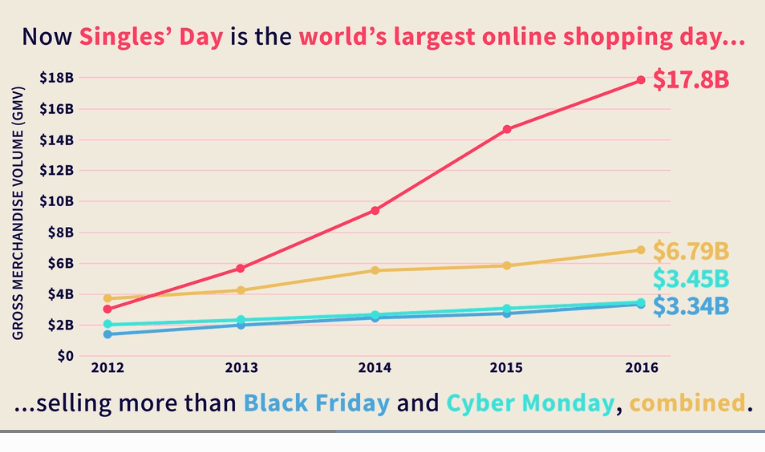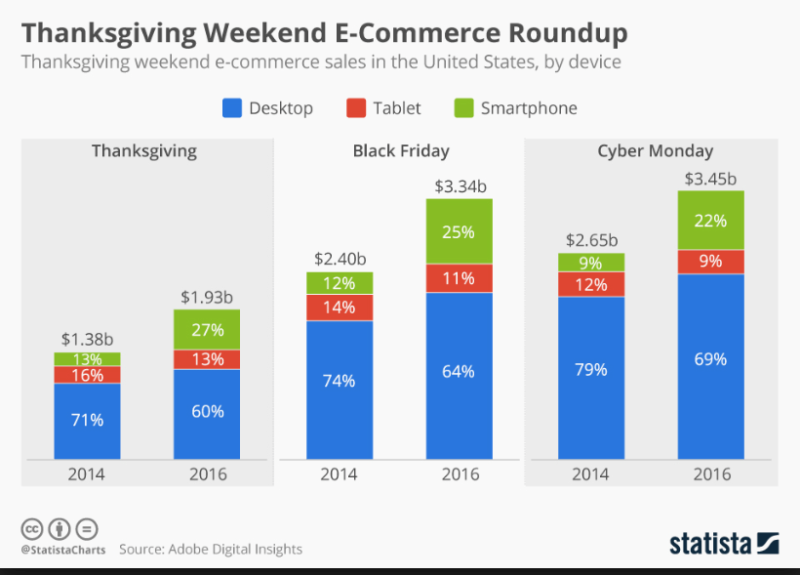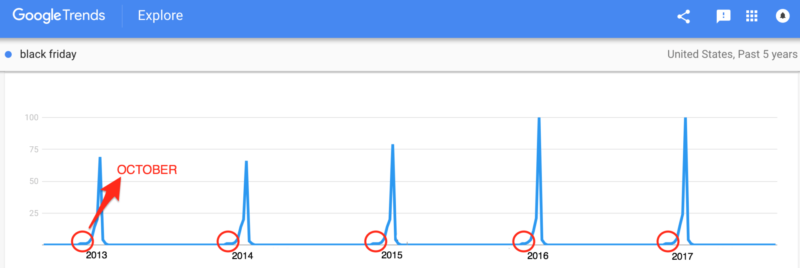How to use SEO for big ROI during back-to-school and other sales events
Contributor Karen Bone reviews how to use SEO and content campaigns to boost revenue before, during and after major sales events.

In 2016, Alibaba’s Singles Day grossed $17.8 billion in 24 hours, and that figure rose to $25.3 billion in 2017:
In the United States, Black Friday and Cyber Monday 2016 sales combined brought in $6.79 billion:
These events kick off with Labor Day sales (back to school), which is just around the corner, and end with the holiday shopping season.
With online merchandise selling out in seconds and competitive price wars getting exceedingly high, it’s no wonder retailers utilize summer months to prepare for eager shoppers.
While retailers are focusing on campaigns, commercials, margins and inventory, what can a search engine optimization specialist (SEO) do to help a client’s bottom line? How do we create a competitive advantage over other retailers for these specific sales events?
To start, your SEO strategy should consist of two main themes: team communications and classic SEO tactics (content and links).
Internal (and sometimes external) team communication
It’s true what they say — the early bird gets the worm! Prepare early and meet with all teams involved in making the sale a success. Then, take these steps:
- Plan which products or categories of products the company wants to push (often called hero products), and place them at the forefront to drive business. The SEO strategy should support these key drivers.
- Meet with marketing and public relations (PR) teams to understand their messaging and how they plan to leverage the website for the sale.
Once product planning has been finalized and the teams are in place, I recommend you challenge the team with the following goals:
- Create a timing schedule for the campaigns.
- Decide if you need to create new web pages or use existing pages.
- Decide if you need/want vanity URLs.
- Develop an external linking strategy.
- Write out the customer journey from various touch points on and off the site to your hero products.
Do the research
As with any good SEO strategy, everything comes back to what your target audience is looking for in relation to your products and the sales event itself. Use past data to help make decisions, but also look at current trends.
Review your site’s analytics and trends before, during and after the previous year’s sales events. Look for answers to these questions:
- When did traffic begin increasing?
- What was the customer journey through your site?
- What content helped drive customers to certain pages?
- Which campaigns worked? Which didn’t? Why?
- What was the return on investment (ROI) and average order value from each traffic channel to your site?
- What role did organic search play?
Leverage Google Search Trends and research appropriate target keywords. Some terms may not be appropriate or helping as much as you think.
Think about “when” things should be done, and look for solid keywords. Publishing Black Friday content on the actual day, or even a couple of days before, may not drive sales or help you become more relevant in the search results for the term “Black Friday.”
At Ayima (my company), our research indicates consumers start searching for Black Friday-related queries in mid-October. If your content hasn’t been indexed and ranked by that time, you will probably miss the opportunity to help engage early searchers to your event.
Take note of where you currently rank for keywords related to your products and categories. If the current results won’t drive the desired traffic, but you know searches for these items will be high, begin working on these pages immediately. This is especially true for popular gift items (video games, personal electronics, small kitchen appliances and accessories from all categories).
The graph below helps to highlight the seasonality around these annual sales events for key products and categories.
The early spike at the end of August for “laptops” represents searches for the back-to-school sales period. The larger secondary spikes showing greater interest in laptops for Black Friday (perception of a greater deal).
The first tall peak represents Black Friday, and the second peak represents Christmas week. You can see where “Michael Kors watches” becomes less popular over time, but the brand’s momentum picks up with a new product, “Michael Kors Smartwatch.” This recaptures market share and makes it a more desirable hero product to rank for in 2018.
Technical SEO overview
It’s a year-round effort to implement tactics to increase search engine crawling and indexing. However, with more hands on the website during these times, you need to make sure another team plan won’t negatively impact your online market share.
To help keep the teams organized, you can:
- Draw out a timeline for site changes, including before, during and after the sales event.
- Ensure the SEO team is able to run a quick review and sign-off of the proposed changes to mitigate any negative impacts or missed opportunities.
Once the changes are known, the research is complete and the user experience has been mapped, it’s essential to add unique content relative to the event.
Content specific to the event
With annual events, it doesn’t make sense to create a new landing page each year. Instead, create a sale landing page that will live year-round, and then update accordingly for the date of the sale.
For example, once the 2018 event ends, you can update the page and start building excitement for 2019.
Retailers ranking for broad terms like “Black Friday deals” have dedicated Black Friday landing pages on their sites. Here is an example from Best Buy already showing for 2018:
Content on a sale landing page should be geared to before, during and after the sale date. Get searchers excited for the upcoming event on your site by including any of the following:
- Deals you may have had last year.
- Teasers of upcoming sales.
- An FAQ of how to shop during the sale.
- Newsletter signup info.
- Social media buttons.
- A countdown clock.
Content for the products and categories
As I mentioned earlier, if the current rankings for your product or category pages are less than desirable, getting a jump start on these product pages in the summer would be easier than tackling your entire product catalog right before the holidays. A good example may be the Instant Pot, which will surely be a hot item over the holidays. Searchers who know they want this product will search for it directly, making ranking for “Instant Pot,” and not just “Black Friday,” crucial to your success.
To help optimize your key web pages, consider these two important questions:
- Does your site have the same manufacturer content for products that appears on other retail websites? If so, that may be a problematic for rankings for duplication reasons. For your key product categories, beef up the amount of useful and unique content that appears on your web pages. This will allow search crawlers to review the new content and rank your pages higher.
- Consider implementing customer reviews and schema markup on product pages.
Internal and external linking
Link-building techniques are paramount to support SEO and traffic campaigns. Here are some key points to consider when working with link campaigns:
- Always start a new linking campaign with an audit of your internal and external links. This will give you a baseline to work from.
- Develop a strong internal navigation path. This will help with the flow of link equity to new and existing web pages and help guide visitors to internal pages on your site.
- When it comes to backlinks, chances are your PR and marketing teams are helping to drive links through other company efforts. Review their material to make sure they’re linking to the most valuable and appropriate page(s) for the message. I’ve seen too many deal sites publish a press release for a retailer’s upcoming sales event that only links to the retailer’s home page and includes no information about the event. Make this a better experience for the end user by giving them an opportunity to click through to a dedicated sale landing page.
You’ve put a ton of work into your site and want a successful sales event. Now it’s time to review your analytics and prepare a detailed report with insights to benefit the next major sale.
Once the sales event has wrapped up
You’ll want to take the following steps during the post-event process:
- Update your sale page content and meta tags immediately to reflect the next big event or year.
- Keep the landing page live (HTTP status code 200), and maintain links to the page throughout the year.
I strongly recommend you do not remove the landing page if you want to reuse it next year, since it may have a lot of quality backlinks pointing to it. If this is the case, be sure to add links from the landing page back into your main website to help the flow of link equity into your main site.
To close
Refine the above steps to suit your business and sales events. Bear in mind that these recommendations assume you’ve already completed two major SEO projects: Your e-commerce site is secure (HTTPS), and you’ve got a search engine-friendly mobile site. If not, you need to tackle those two items first, because they’ll be critical to your success.
Contributing authors are invited to create content for Search Engine Land and are chosen for their expertise and contribution to the search community. Our contributors work under the oversight of the editorial staff and contributions are checked for quality and relevance to our readers. The opinions they express are their own.
Related stories
New on Search Engine Land





